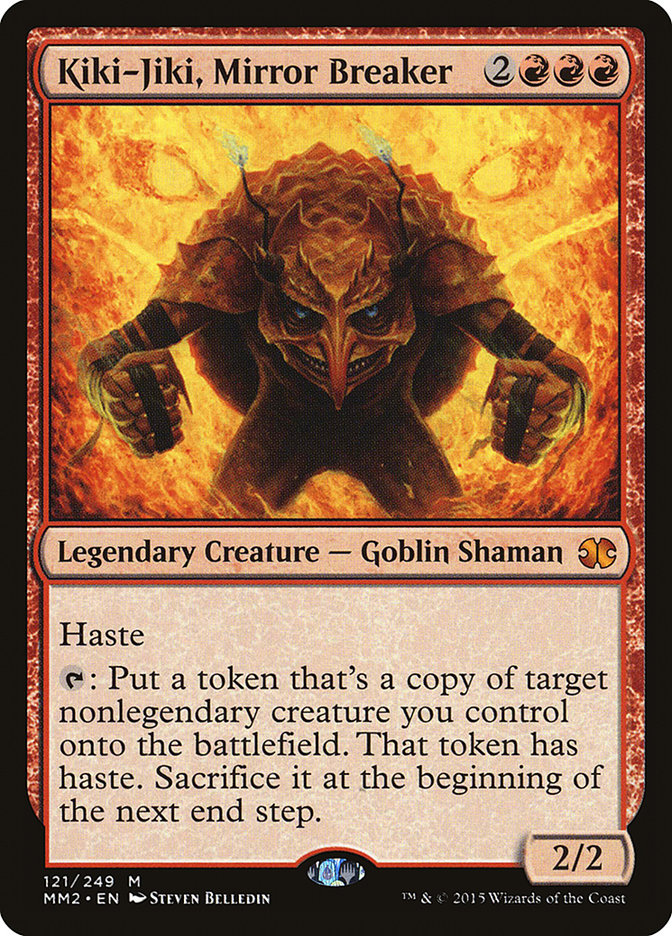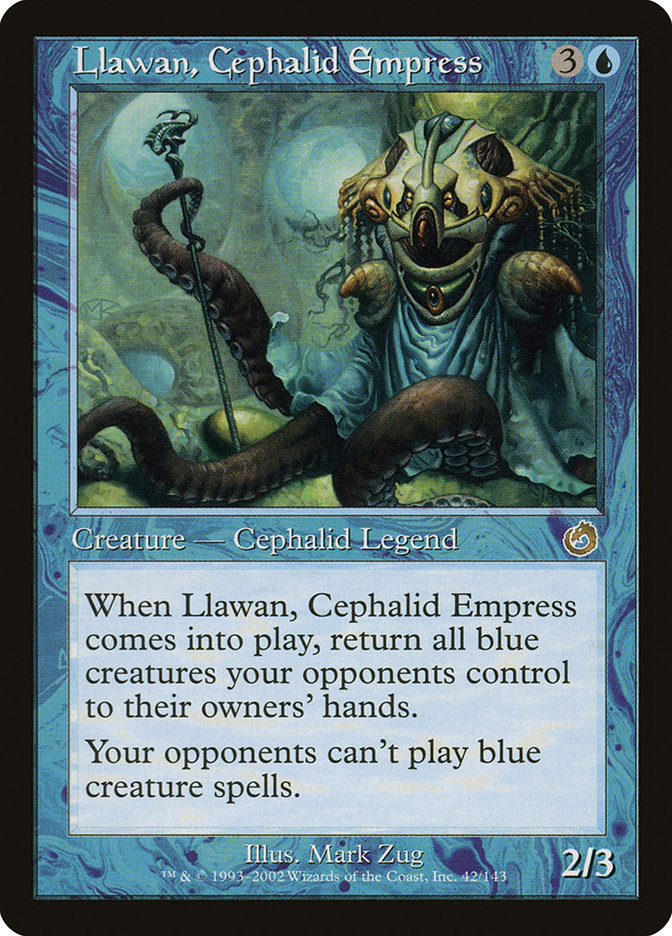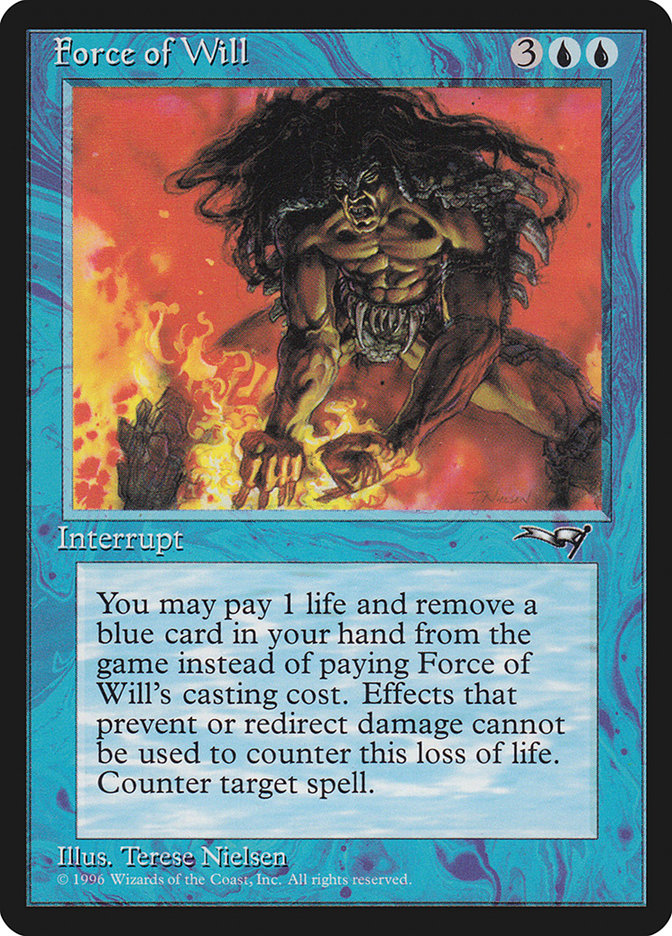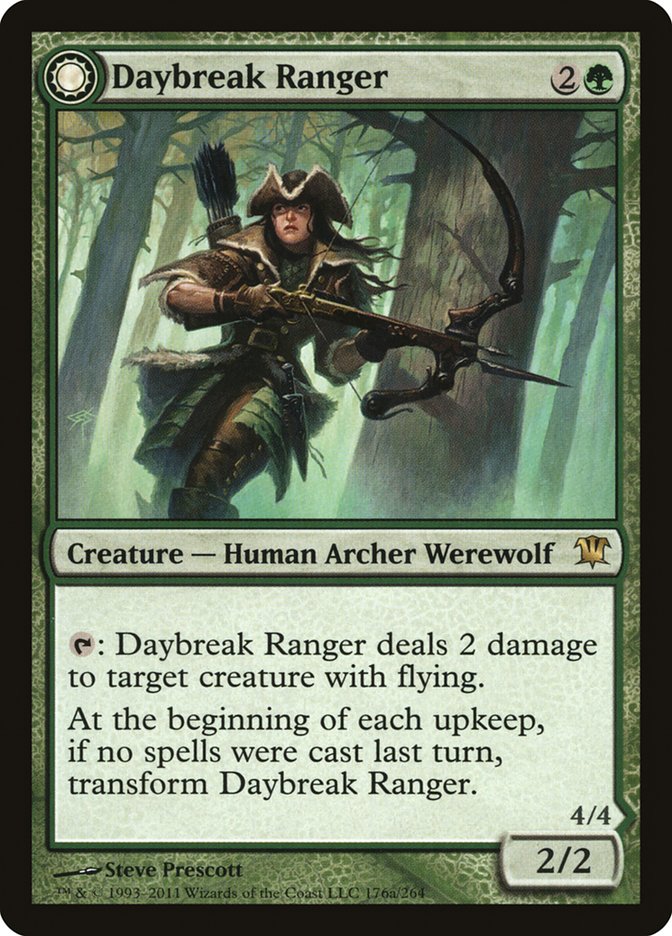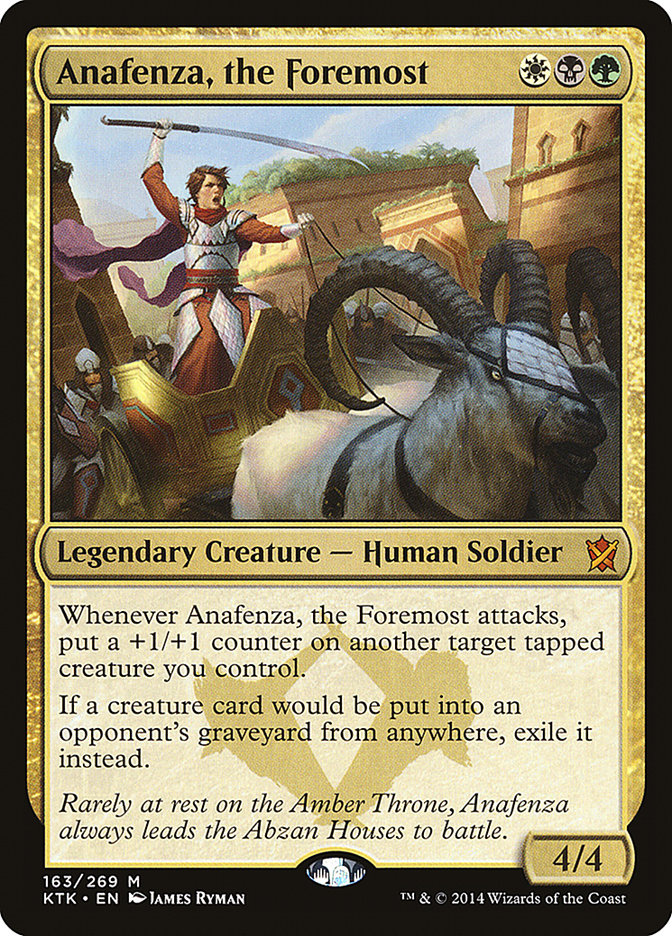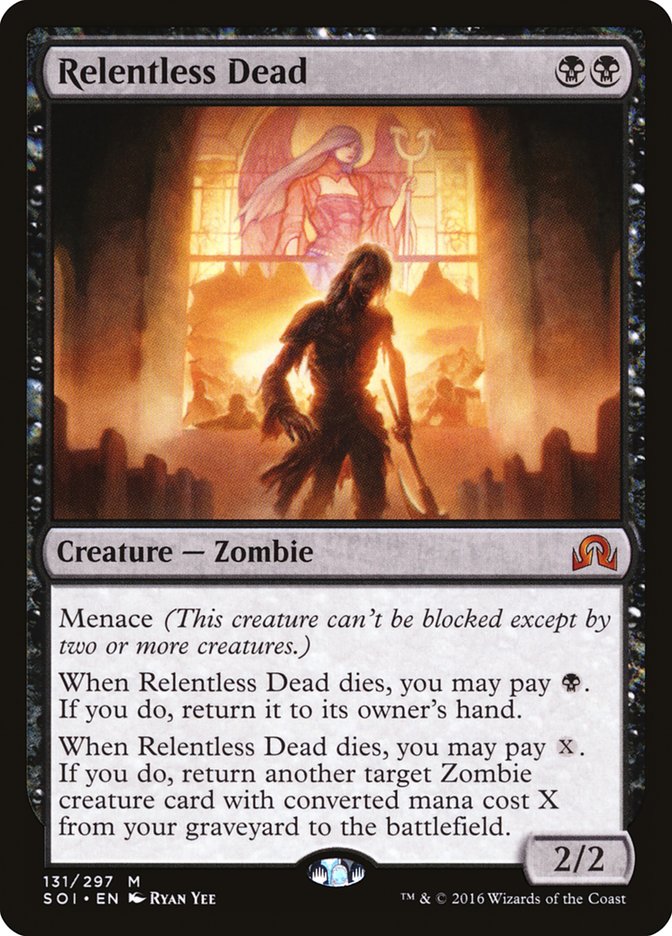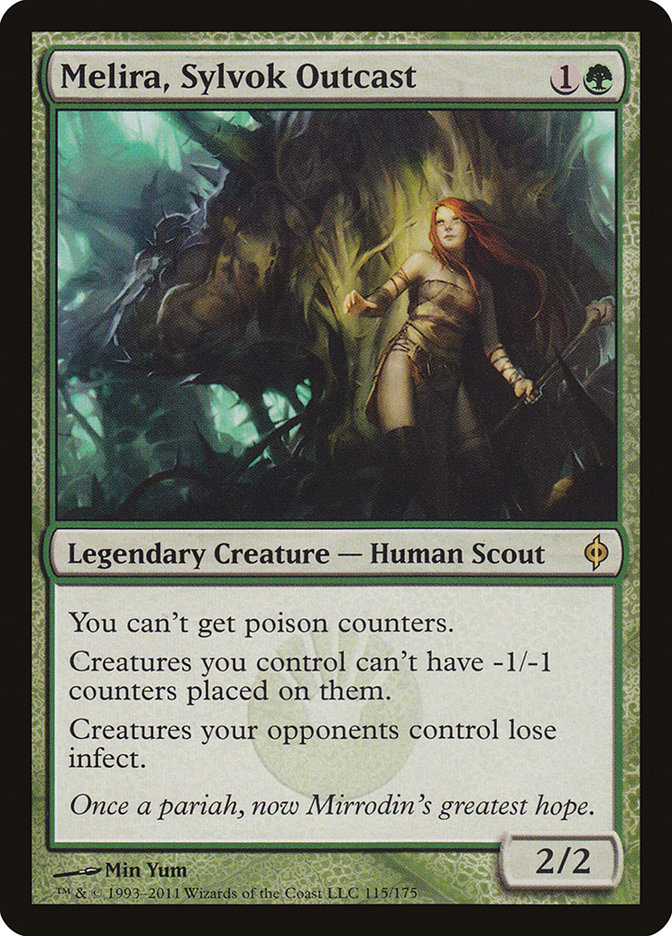 @ChasAndres) are Magic finance related, as are many of my Facebook posts. And then there are the article comments, the unpublished articles, the private messages, and, of course, my trading blog from back in 2010.
@ChasAndres) are Magic finance related, as are many of my Facebook posts. And then there are the article comments, the unpublished articles, the private messages, and, of course, my trading blog from back in 2010.
The point is, I’m fairly confident that I’ve hit that million-word mark and then some. Granted, far too many of those words were Daybreak, Ranger, Nivmagus, and Elemental, but I like to think that the vast majority of my windbaggery has added up to something decent. Since this is my 200th article, I felt it was a good time to take a look back and see if I can summarize some of the bigger lessons I’ve learned over my last million words.
The biggest changes can be the hardest to notice.
I started writing Magic finance articles in 2010. Back then, the key to success was to have a strong network of trading partners with very different goals. My usual process went something like this:
· Trade Standard staples to grinders for their casual cards, usually at bulk or near-bulk rates.
· Trade casual cards to casual players for their Standard staples, usually at a mild discount.
· Repeat process until my collection got absurdly good.
I gained about 25% value on every transaction, so the more deals I made, the better my collection became. This was in the era before Modern and the Commander price boom, so my bread and butter were cards like Kiki-Jiki, Mirror Breaker. Kiki had a book price of $2.50, but I could get them for fifty cents from Standard players and trade them at closer to $3-$4 to a casual mage.
This sort of trade grinding is no longer really possible. Sure, if you’ve got a $40,000 binder and you want to sit around at a Grand Prix and demand whatever you want for absurdly rare foreign foils, you can do stuff like this. But at the FNM level? No way.
What happened? Some combination of these three factors:
· Between the increase in the player base and the advent of Modern, card prices went way up across the board. Most cards maxed out at $10-$20 in the old days, so it wasn’t necessary to have an intimate knowledge of your collection’s value. These days, it absolutely is.
· Everyone bought a smartphone, and the networks got good enough to make looking up prices on the fly a reasonable proposition instead of an interminable drag.
· Magic finance writers like me were given a large platform, causing players to become much more value-conscious.
The end result is a world where everyone expects their trades to be even down to the last dollar or two. It’s remarkable; in just a couple of years, the classic “trade shark” has been beaten back to the fringes of the community.
Smartphones and savvy partners certainly make trading less fun — really sweet deals are few and far between these days — but I have to admit that I’m pretty happy we’re no longer losing nearly as many new players to feel-bad deals muscled through by aggressive sharks. Overall, things are better for more people than they were six years ago.
Always have a goal…but make it a flexible one.
This applies in Magic finance, in writing, and in life. Time is precious, so it’s important to be working toward something whenever possible. How many times have you bought a card just because it was kind of a good deal? How many trades have you made just for the sake of doing something after your third-round loss? These impulse actions do pay off from time to time, but it’s a bad way to go through life.
I spent five years working long hours as an administrative assistant at a television network. It was a very good job right up until the point when I decided that I didn’t want to spend my life working in the television industry. Even still, it took me longer than I’d care to admit to leave a relatively safe and lucrative position. In the meantime, though, I was miserable — I was busy all the time, but I no longer had a goal, so all that work felt meaningless. That job had gone from being one of the best things that had ever happened to me to feeling like an anchor around my waist.
So I quit. I left Los Angeles, left my friends and career behind, and now I’m a graduate student, TA, and freelance writer in North Carolina. I work twice as hard and I make half as much money, but you know what? I’m way happier than I was two years ago. My job is more rewarding, my writing is improving, and I’m going to be spending the better part of the next two years working on a book. If it succeeds, great. If not, I’ll figure out something else. Find a goal. Stick to it. Just don’t be afraid to modify it as you grow and change as a person.
We all spend too much time obsessing over theoretical value.
This is one of the bigger downsides of today’s speculation-driven Magic economy. How many helpful trades have you decided not to make because the last couple of dollars didn’t work? How many “successful” spec buys have you made, counting your theoretical money as the card climbed in value, only to find your stack of spec buys sitting in a drawer half a year later?
We traders and speculators spend too much time counting dollars that don’t exist. We forget to factor in time, effort, shipping costs, dealing with buyers, and the fact that there’s no way we’re ever going to get close to the current retail price for any of our cards. If you want to speculate on cards, be sure you’ve got a complete plan and not just an itchy trigger finger when it comes to online shopping.
Organization is the secret to success.
Keep track of everything — everything — in your collection. Know what you have and what you need. Know how much you paid for each card and how much you can sell it for. I can’t tell you how many opportunities I’ve lost because I forgot about a stack of Amulets of Vigor hiding in my closet, or how many deals I wrongly assumed were good because I didn’t keep accurate enough sales records. Want to stop chasing theoretical value and start really leveling up your game? This is how to do it.
There is an apt baseball metaphor for every occasion.
Have you ever been to a baseball game at a stadium where you don’t know the home team all that well? You can usually pick out the best player pretty quickly — he gets the biggest cheers, people turn around in the beer line to pay attention to his at-bats, and time seems to flow differently whenever he makes solid contact with the ball.
I spend a lot of time poring over stat lines for fantasy baseball, but none of those numbers tell you whether the guy you’re drafting is one of those players or not. And perhaps it doesn’t matter — math is math, after all — but, on some level, I think that there is a certain intangible quality that makes some players great and you need to see them in action to know.
The same thing is true with Magic cards. It’s easy to get cute with value and role-players, but there are certain cards that are just superstars. As long as the right Magic format exists, they are going to be good. These are the cards that worth keeping through rotation, and they are the cards you always want to be targeting in trade. It’s far too easy to get cute with prices and trends. Sometimes, just stick to your gut.
When in doubt, sell into hype…
Every few months, a format or a few staples start going up and up and it looks like their growth will never stop. Back in 2012, it looked like even the lowliest Legacy-playable cards were heading toward triple digits. Heck, even Llawan, Cephalid Empress was $50 for a hot second. That card is so irrelevant right now that I didn’t even have her name in my MS Word dictionary!
While Magic cards in general are worth more now than they were in the past, selling individual cards into hype is almost always the right play. The exceptions are generally superstar-level cards — Jaces, Tarmogoyfs, etc. Everything else? Ship ’em out while everyone is going nuts over the latest tech.
…But don’t sell your favorite cards.
Seriously, just don’t do it. I’ve talked to hundreds of people who have left Magic over the past six years, and almost all of them wish that they’d kept the most meaningful chunk their collection.
It isn’t just about value, either — it’s okay to have an emotional attachment to a specific copy of Tarmogoyf or Serra Angel or Force of Will. These things are impossible to re-acquire later on when you decide to give Magic another shot. Just stick them in a drawer and forget about them instead.
Be empathetic and community-oriented.
I get it — there’s a level of ego and self-centered focus that seems to go hand-in-hand with strict analytical thinking and high-level play. And while it’s true that some of the best players and speculators do act like the world stops at the edge of their own sensory experiences, most of the real greats aren’t anything like this. For one, how are you going to read your opponent’s line of play if you can’t put yourself in their shoes?
People who consider themselves traders and speculators have an additional obligation to add value to the community, too. Unless buying and selling Magic cards is your full-time job, you’re probably in the finance game as a way to make Standard a little more affordable, or to build a nice cube, or to finally get into Legacy.
These are all noble goals…as long as you don’t forget that there are actual Magic players on both sides of all your transactions. There’s no point in making Standard cheaper if you’re a toxic influence on your local Standard community. There’s no reason to build a cube if you alienate everyone who might want to play with you.
Since most of your Magic finance transactions are designed to primarily benefit you, make sure that you compensate by being the best community ambassador you can be. Be a pleasant opponent at FNM. Bring your cube down to the shop on off nights. Encourage the next generation of players with kind lessons and a free card or two. Treat everyone you come across like actual human beings instead of walking trade binders.
Empathy is also the most important tool in your trading arsenal. Sure, you can try to bully or intimidate someone into a lopsided deal, but that’s a vile strategy with diminishing returns. You’re better off trying to figure out exactly what your trading partner wants and why they want it. That way, you can work together to find something that’s mutually beneficial. Oh, and you might accidentally become a better person along the way. Win/wins are good, right?
Pay extra attention to seasonal trends and high-profile reprints.
If you’re a regular reader of this column, you already know that most of my finance advice is based on making the various seasonal trends work for you. It’s simple Econ 101, buy low/sell high economics: buy Modern cards when everyone else is focused on Standard, sell Modern as soon as the eyes of the Magic community head in that direction, buy older Standard cards while everyone is worrying about rotation, and sell them as soon as the top decks start to emerge.
The same is true for reprints. It doesn’t matter how good the card is, there is always a supply glut and demand trough somewhere between three and twelve weeks after the set release. Want a cheap Legacy collection? Start saving today, right now, for two playsets of everything good in Eternal Masters. Scoop ’em up as singles during StarCityGames.com’s inevitable late summer sale. Wait two years, and then trade your extra playset for whatever is cheap and new in the next reprint set. It’s not a sexy way to build a collection, and it takes a long time, but it’s cheap, effective, and remarkably low-risk.
Be process-oriented, not results-oriented.
I make fun of my Daybreak Ranger spec all the time, but the truth is that it was the right decision to make at the time.
For those of you who weren’t playing back during Innistrad, Daybreak Ranger was a dollar rare that flew under everyone’s radar during the pre-order period. Right after the prerelease, Brian Kibler and Brad Nelson both published articles on the same day raving about the card as one of Innistrad’s underrated Standard gems. This was everyone’s first experience with both flip cards and werewolves, so it wasn’t a stretch to assume that one or two of them would turn out to be significantly better than we all thought.
Daybreak Ranger was a fine card, but it never found a home, so it quickly dropped into bulk rare range. Could I have really seen that end coming, though? Nine times out of ten, if two pros with serious deckbuilding bona fides come out of the gates raving about a new bulk rare, it’s time to start buying.
Did my experience with Daybreak Ranger keep me from going deeper on Bonfire of the Damned a few months later when Patrick Chapin started raving about how miracles were being wildly underrated? Probably. That’s results-oriented thinking at work, and that’s why you should try to avoid it if at all possible. It’s better to trust your process and accept that not everything is going to pan out. Evaluate your decisions based on the information available to you at the time, not some fantasy world of perfect information that has never actually existed for anyone.
Don’t overreact.
As Warren Buffett says, “Be fearful when others are greedy and greedy when others are fearful.” It’s human nature to be hyperbolic — every bump in the road feels like the end of the world, and every victory seems like the end of the rainbow.
When in doubt, it’s best to assume that everything is going to end up somewhere back near the status quo. Don’t mistake this for a lack of change, because everything changes, but it rarely comes on as quickly as you think it will.
Write modestly, but with authority. Write conversationally, but with an artistic flourish. Crack a joke. Above all, be as honest as you can.
People ask me for writing advice sometimes, even though I still consider myself an overachieving amateur. Now that I’ve passed the million-word mark, though, I feel like I can speak on this topic without feeling like a total clod. This section’s header is my best effort at distilling my writing ethos into four brief sentences.
After reading a lot of really bad undergraduate student essays this year, I think the biggest mistake most amateur writers make is overwriting, loading down your sentences and paragraphs with lots of unnecessary baggage. “The thing I am thinking is this…” or “In conclusion…” Nine times out of ten, your best bet is to say what you want to say as quickly and honestly as possible and then get out.
If something can be easily explained by coincidence or oversight, it’s probably not a conspiracy.
All it takes is one false accusation of having insider knowledge or of working with the Magic finance Illuminati for the whole idea of “it’s a conspiracy!” to start ringing false. That said, I’m pretty sure the Splinter Twin ban was a false flag operation orchestrated by Gideon Jura in order to highlight the oppressiveness of the Eldrazi regime on Zendikar.
Don’t fall victim to the sunk cost fallacy.
It’s human nature to consider an item’s worth based on its previous value. For example, when Llawan was dropping from $50, to $40, to $30, to $25…well, it’s only natural to sit there and wait for it to spike back to $50 again, right? It has been shown in dozens of studies that time after time this is how people act. We get fixated on our losses, clinging to the idea of a rebound instead of locking in the value that remains on our way to the bottom.
Consider Anafenza, the Foremost. There was a time you could have sold her for $12, but now she’s under $5 and dropping. It’s pretty clear that she’ll be below $2 by the time set rotation finally hits. The smart thing to do is to sell or trade now and buy back in at rotation if you want to own a few copies for casual or Modern play, but I suspect most people will be fixated on that $12 number and leave their copies at home, unwilling to move them at such a big loss.
Or consider the years I spent working in the television industry. So many people stay in jobs they hate or relationships that don’t work for them because of the “sunk cost” they’ve already put in. After all, how can you move on without invalidating all the time you’ve already spent working toward that goal? It’s important not to spend too much time lamenting the past when the future is all you can change. You can’t go back in time and make a different decision or sell a card when it was at its historic high. As the great Gandalf once said, “All we have to do is decide what to do with the time that is given to us.”
This too shall pass.
Everything is fleeting, and that includes everything in Magic finance. We all make misplays and punts. We all make bad specs and awful trades. At the risk of getting too philosophical, the only constant in this world is that it will be different next time. It’s impossible to stay above the daily anxieties forever, but I do think that a healthy mindset is a critical part of making good Magic finance decisions. There will always be another collection to buy, another deal to swing, another chance to get that elusive piece of power.
None of these material things should affect your emotional well-being, but if you’re anything like me, they’ll leave you in a dark mood far more often than they should. Just do your best to step back, crack open the beverage of your choice, and call up a good friend. It won’t always help, but it’s well worth trying to salvage whatever remains of the day.
This Week’s Trends
Shadows over Innistrad spoiler season has begun! There haven’t been enough cards spoiled yet to really kick things off, so I’ll be getting into the nitty-gritty set review stuff next week. I do think that both Archangel Avacyn and Relentless Dead have serious game in Standard, though I can’t really recommend pre-ordering anything until a clearer picture of the set starts to emerge. I’m also a fan of Thing in the Ice, but I also dislike its current pre-order price. Just sit tight for now.
Jace, Vryn’s Prodigy and Kalitas, Traitor of Ghet continue to be the biggest risers in Standard. I expect both cards to continue being great in the new format, but remember that Jace is going to lose some effectiveness without the fetchlands, even though he’ll gain some with madness, delirium, and the other Innistrad graveyard mechanics. You’ll still need Jaces to play most blue decks, but I can’t see him warping the format in an Eldrazi Temple sort of way.
Other risers include Risen Executioner; Drana, Liberator of Malakir; Liliana, Heretical Healer; and Avaricious Dragon. These are reasonable specs considering what we’ve seen from Innistrad so far, but I’d rather just pick up playsets of the Battle lands. These are guaranteed to see play in the new Standard, and I suspect they’re on the cusp of some major movement.
In Modern news, Scout’s Warning is up big on the back of a buyout spike. I’ve heard some rumblings about Modern Allies and Commander and whatever, but I suspect it’s just a one-drop rare from Future Sight with low availability. Sell into the spike if you can.
Melira, Sylvok Outcast also went up a lot last week. She sees a decent amount of play in Abzan Company, which is one of the few decks that seems to have game against the Eldrazi in Modern. If that deck is still popular after the inevitable Eldrazi ban (I suspect yes), Melira should continue to be a hot commodity. I would hold onto these for now.
Did you know that Adarkar Wastes was $15? This is because of U/W Eldrazi in Modern. The card will never be $15 again, so crack open your casual decks and sell your copies ASAP. You can re-buy them for a buck or two later on.
You know what else spiked last week? Chainer’s Edict. I guess people think that paper Pauper will obey the same rules as online Pauper even though Chainer’s Edict has never been printed at common in a paper Magic set? I think they’ll end up on the wrong side of history on that one. Sell into the spike.
Don’t forget: with set rotation coming, now is a good time to start acquiring Khans of Tarkir and Fate Reforged cards on MTGO in anticipation of post-rotation redemption. I wouldn’t touch anything still being played in Standard, but we could be near the bottom on some of the bulk rares and mythics.
…and with the end of the next sentence, I’ll have reached exactly 3,774 words for the week. Good talk, everyone — and a toast to my next million words here on StarCityGames.com!

